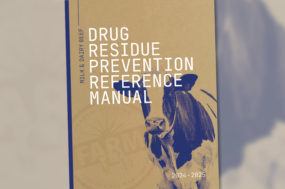The University of Wisconsin-Madison’s Program on Dairy Markets and Policy launched a new podcast series, “Phone-A-Friend.” The series format is based on a popular U.S. television game show in which a participant is able to call a friend if they’re struggling with the answer to a question.
In the inaugural podcast, Mark Stephenson, director of dairy policy analysis at the University of Wisconsin-Madison, called on Monica Ganley of Quarterra Consulting & Advisor, based in Buenos Aires, Argentina, to get an overview of the current dairy situation south of the equator.
In the podcast, Ganley primarily provided an overview of Argentina, Uruguay and Brazil. Collectively, the region produces about 10 percent of the world’s milk supply. However, it is far from a homogeneous dairy block, and is actually a patchwork of dairy-producing countries with their own challenges and issues.
• Argentina has had a rough 2016, politically and economically. Then, there’s the weather. April was a terrible month with a lot of rain negatively impacting infrastructure (roads, milk collection and hauling) and cow comfort.
“A lot of farmers had to dump their milk,” Ganley said.
May brought an early onset of winter, negatively impacting growth and availability of grass forages. Rains returned in June and July, contracting milk production by about 20 percent year-over-year.
“Forage availability is much less than we expected,” she said. “It might not be a perfect storm, but that’s a significant milk contraction.”
Milk prices have been low but improving.
Unlike the U.S. where management styles (intensive, confinement operations vs. pasture-based systems) are usually separate, most Argentine farms mix management styles, providing both options and management challenges.
Culling data is limited, but one of the things Ganley has witnessed is that Argentine producers are reluctant to cull cows, preferring to cut back on feeding grains or making other management decisions when margins are tight.
With the weather challenges, recovery of milk production per cow will be slow, and she anticipates a production lag as the country’s producers move toward normal seasonal peaks in October and November.
• Uruguay faced similar, but less intense weather challenges. Economic conditions are driving milk volumes down. Cow culling has been substantially higher through the first five months of the year, ahead of normal peak culling months of July and August. What remains to be seen is whether culling started earlier, or if it is a trend toward more dairy farmers leaving the business.
• A different set of challenges face Brazil, where reported milk prices are the highest in the region. Nevertheless, milk production is reportedly down (official April-June data won’t be available until August). Brazil’s weather has been dry, and the milk production decline is being attributed to tight producer margins as they struggle with high corn prices. Individual producers (a mix of very small and very large producers) are being impacted differently. Looking ahead, dry weather is forecast for South America’s crop-producing regions, adding feed price risks.
Ganley and Stephenson made a quick stop to the north into Mexico, where grass production has been good, milk yield per cow is up and milk production is expanding. Farmers are struggling with low prices, and some internal policies are creating some confusion, however.
View the ‘Phone-A-Friend’ podcast. PD

-
Dave Natzke
- Editor
- Progressive Dairyman
- Email Dave Natzke



